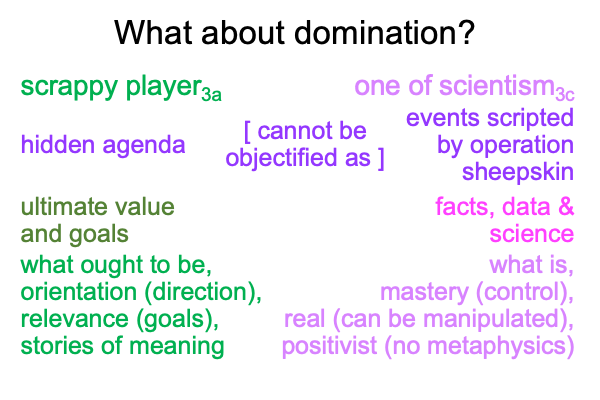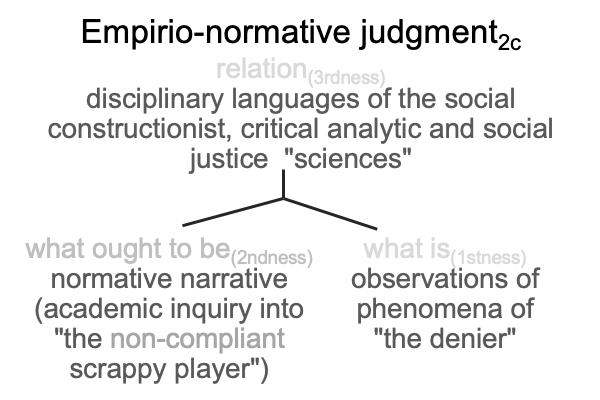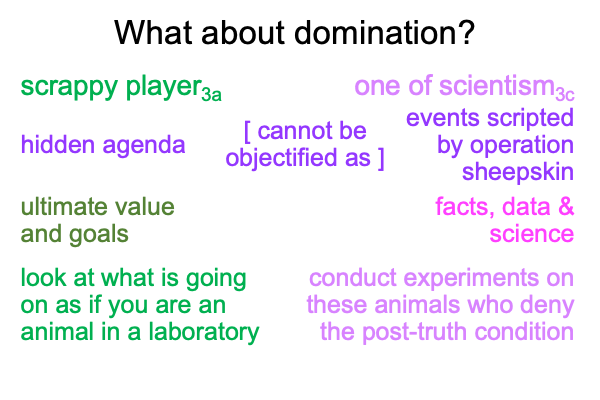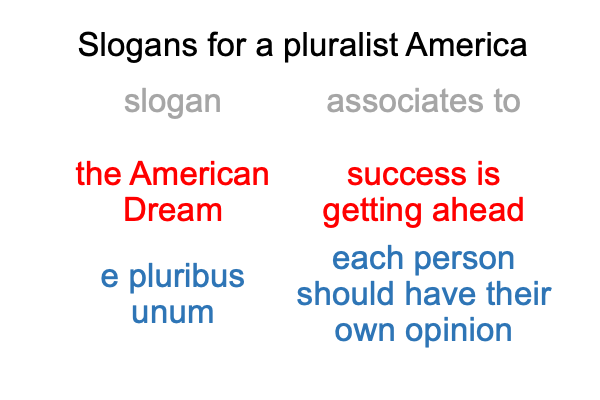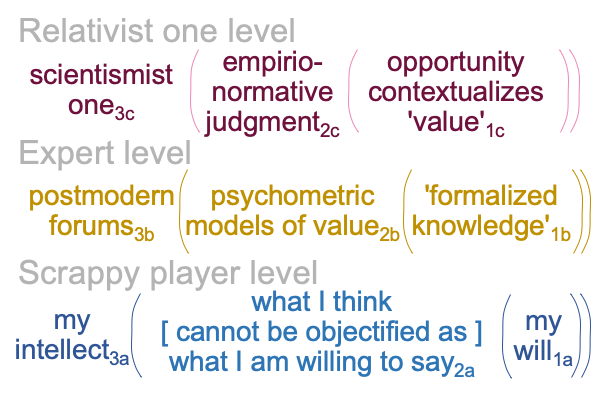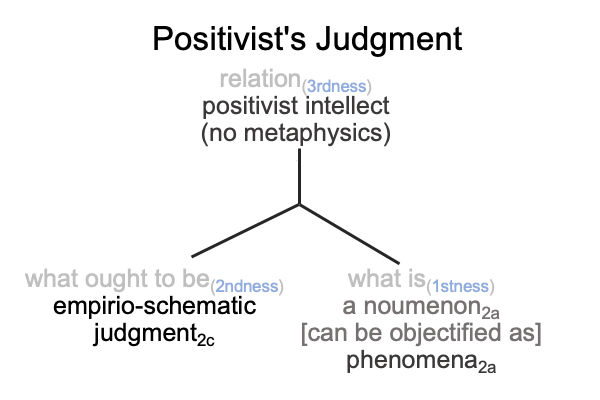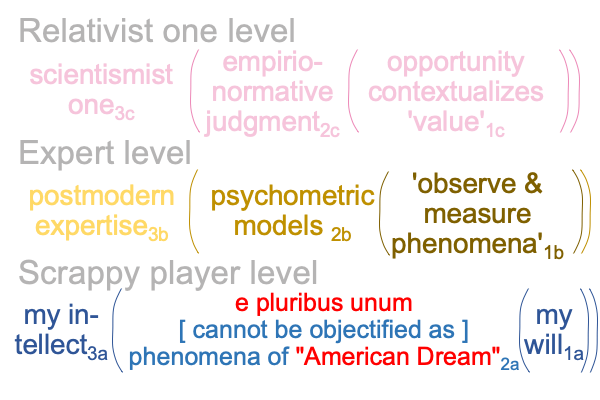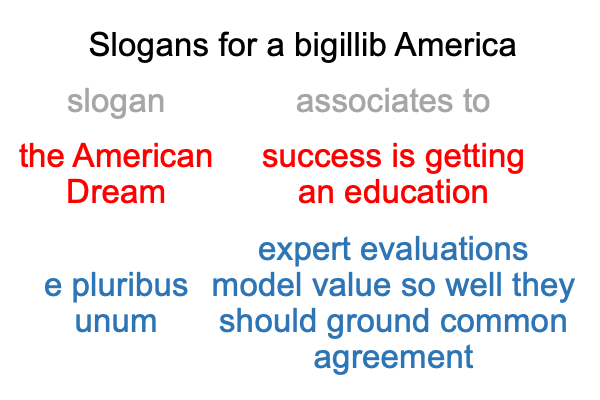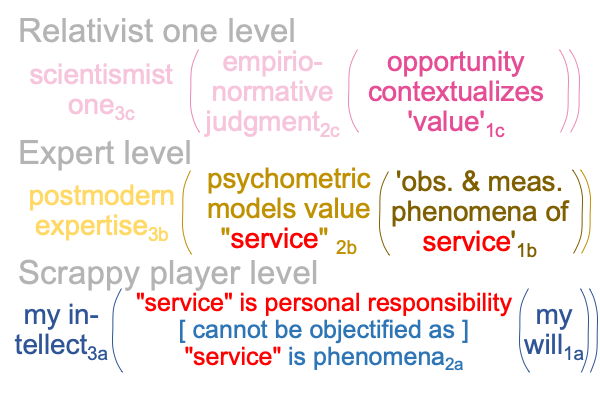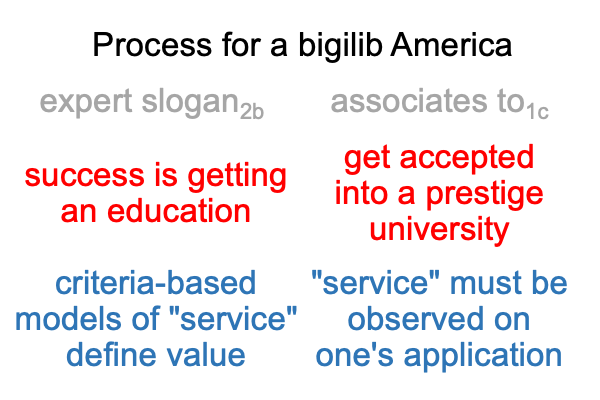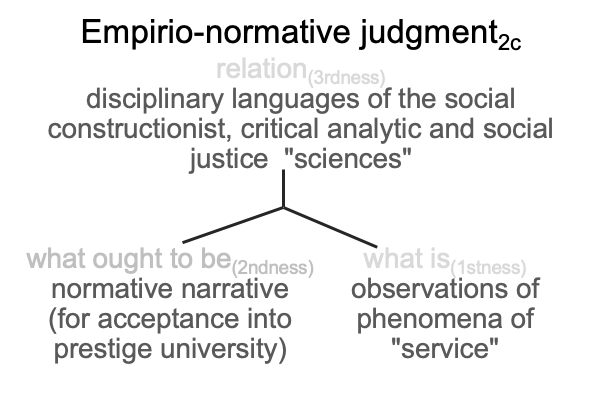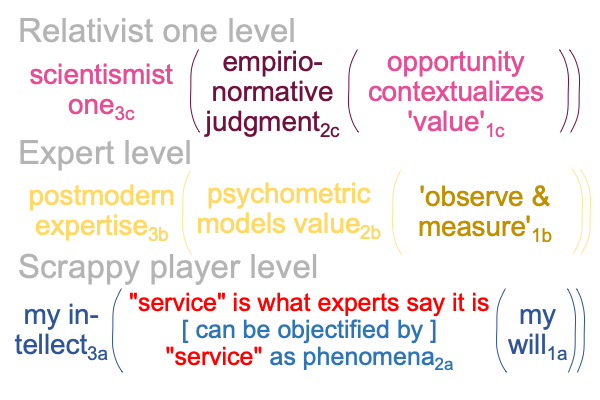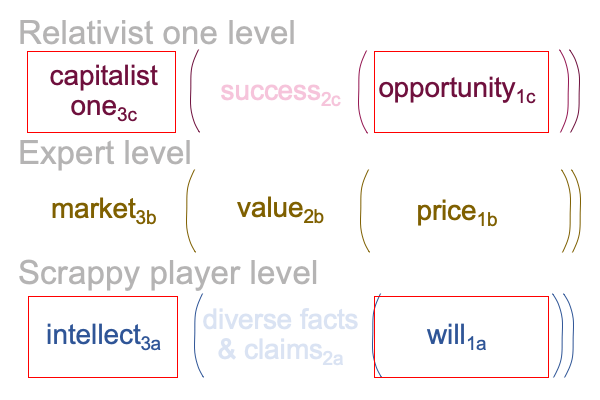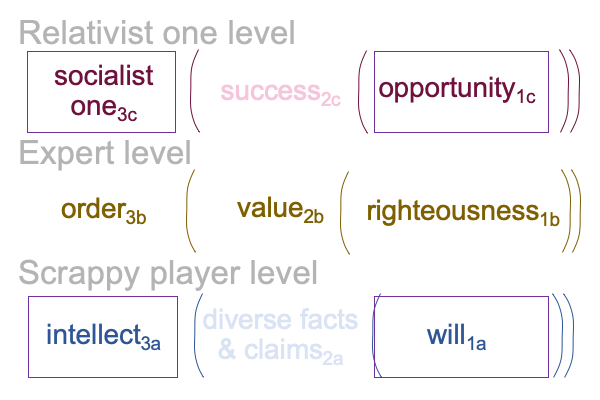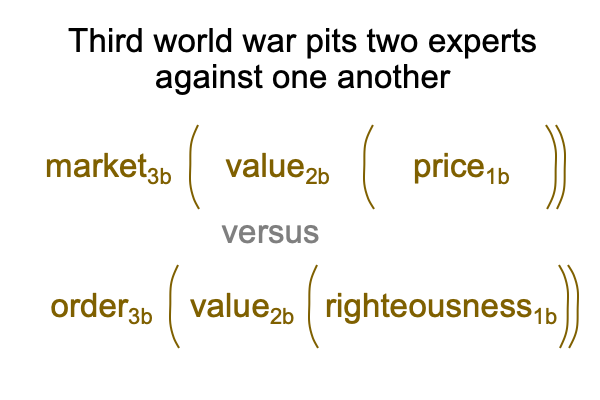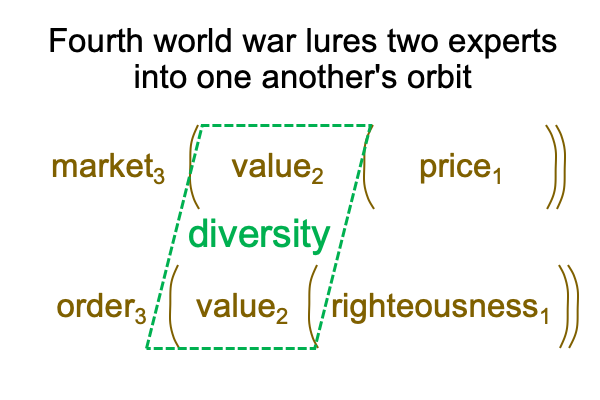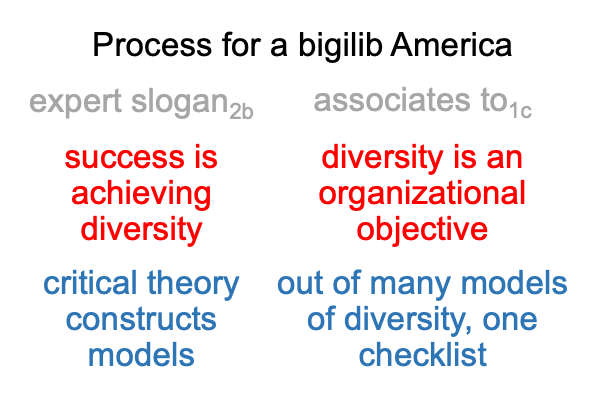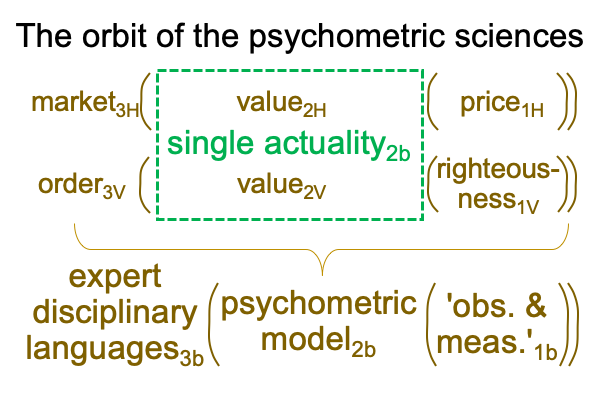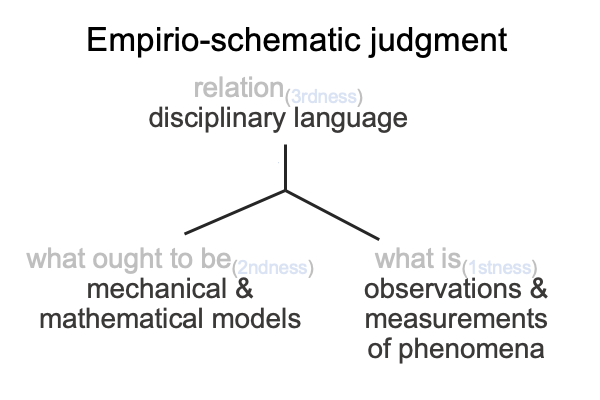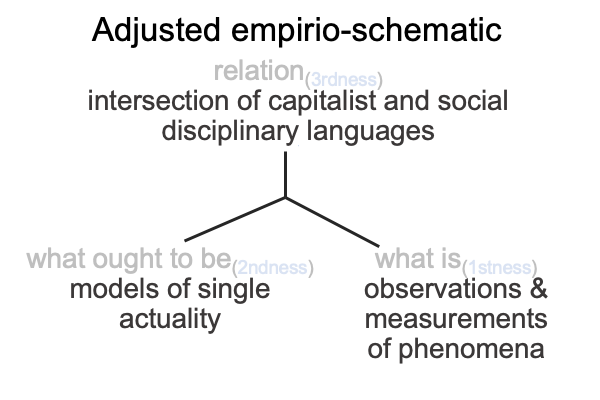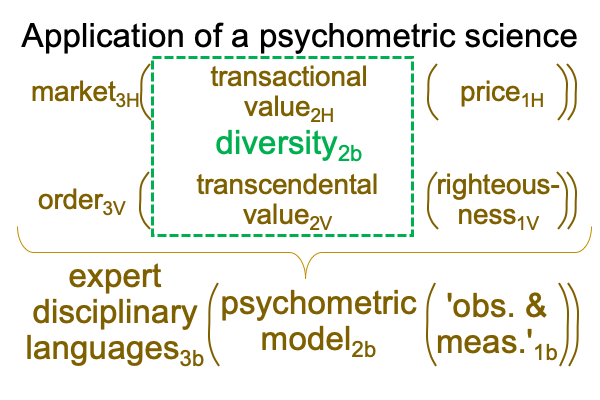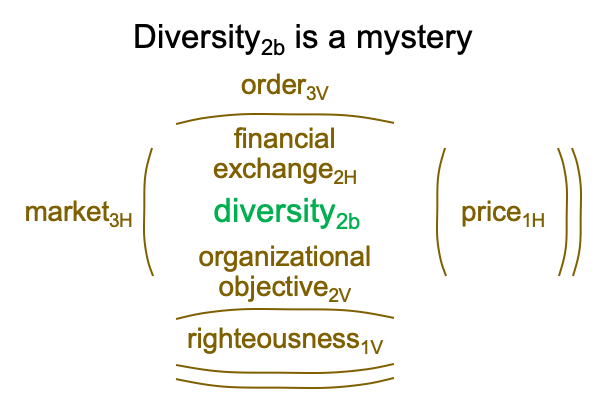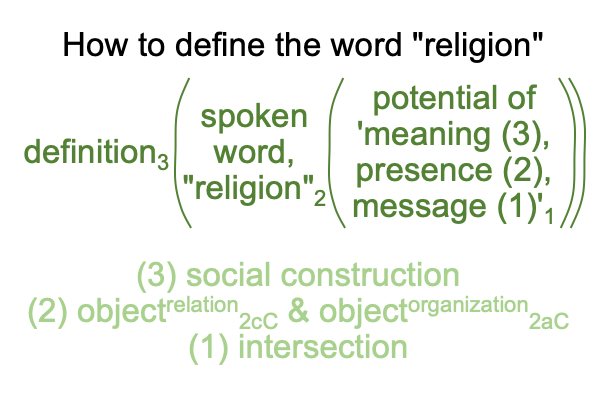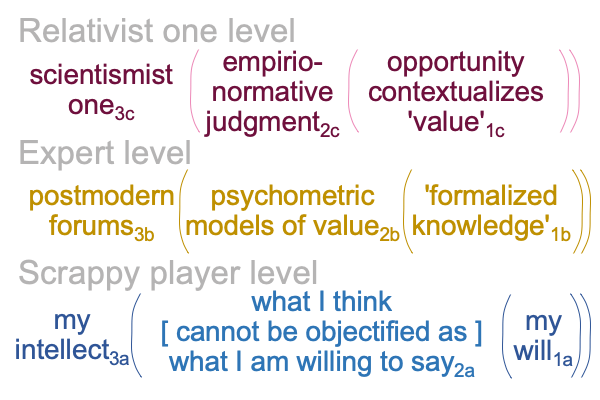Looking at Michelle Stiles’s Book (2022) “One Idea to Rule Them All” (Part 21 of 23)
0722 What the scientist misses is that speaking in the way of natural philosophy turns out to be crucial for thinking. The typical person talks about material, efficient, formal and final causes. The scientist labors to account for such talk with truncated material and efficient causes (that is, material and efficient causes shorn of any metaphysical attributes).
0723 For example, the Torches of Freedom campaign is designed to induce women to start smoking (hidden agenda). Several gals step out of the crowd during the Easter parade and light up cigarettes in front of photographers, who happen to be there to capture the moment in pictures. What a newsworthy event! Matter touches base with the presence of a cigarette. Form associates to what the cigarette is supposed to do.
The scrappy player may talk about a variety of causes. Where does she get that cigarette (material)? How is she at the Easter parade (efficient)? Why is she here at the Easter parade instead of hotel that allows smoking (final)? I did not think that a cultivated person would light up a cigarette in this type of crowd. It’s like drinking in public (formal).
0724 These typical comments2a may be sampled1b and analyzed2b in order to produce a valuation2b that a cigarette company3c might pay for. The truncated material cause2b is that this woman can afford to do whatever she wants to do. The truncated efficient cause2b is that smoking is liberation. These causes explain the Easter parade event, splashed across newspapers the next day.
Plus, these causes are more real than anything that the scrappy player can infer from reports and narratives. After all, no one reveals the truth. The Easter parade event is staged.
0725 Yes, it seems that the experts in psychometrics are missing something about how speaking is tied to thinking. What does the elucidation of Aristotle’s four causes do? Talk about Aristotle’s four causes places a thing or event2, an actuality2, manifesting as matter [substance] form2, into a category-based nested form.
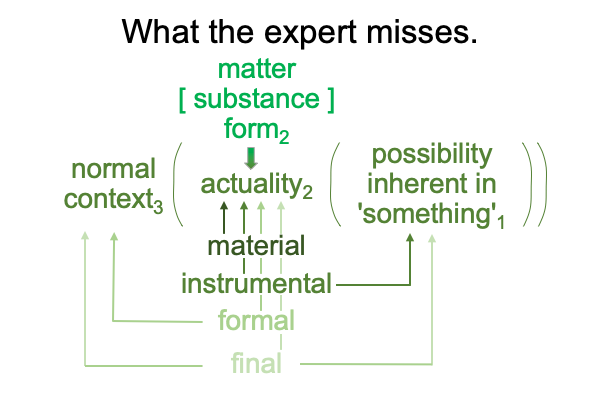
0726 Understanding consists in a completed category-based nested form.
This point is foundational in Comments on Mariusz Tabaczek’s Arc of Inquiry (2019-2024), by Razie Mah, available at smashwords and other e-book venues. Parts of this work are available in Razie Mah’s blog for April through June, 2024.
0727 So, what does this imply?
It implies that the scrappy playera is open to understanding and that the expertb is not.
The scrappy player’s understanding opens a cognitive space to immaterial causalities (formal and final).
Expert modeling constricts its cognitive space to material and physical causalities (material and efficient, divorced from formal and final).
If I associate immaterial causalities with the spiritual world and material causalities with the um… material world, then I arrive at an adjustment of the ongoing sequence of figures.
This adjustment keys into a figure in chapter 10 of Stiles’s book.
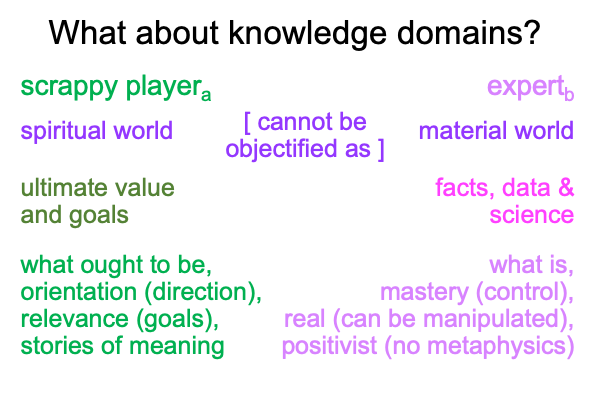
0728 This figure is not a precise reproduction. However, it is suggestive.
The scrappy playera may be a theologian, a natural philosopher, or someone trying to figure out what on earth is going on. The scrappy player is interested in understanding. Understanding entails all four of Aristotle’s causes. So, it seems like the scrappy player wants to know the big picture, as well as the details. Big picture items, such as final and formal causes, informs the scrappy player of directions and designs.
The expert cannot be a theologian or a natural philosopher, because the psychometric sciences are devoted to figuring out valuation in a world bounded by the intersection of capitalism and socialism. Capitalism and socialism are all about our material world. Both “-ism” claims to be fact-based, data-driven and scientific.
0729 The scrappy playera and the expertb levels are fundamentally disjointed. The spiritual world cannot be objectified as the material world.
This is not the same as a noumenon [cannot be objectified as] its phenomena.
Or is it?
0730 The uncertainty is telling because the expert claims to know what the scrappy player does not know.
So I ask, “If the scrappy player knows what the expert knows, then would the scrappy player be an expert?”
No, because the expert follows the positivist intellect’s rule that metaphysics is not allowed. And, that is not the same as being trained in the performance of specialized tasks, which is what the scrappy player calls, “expertise”.
0731 Final causes (intentions) and formal causes (designs) are metaphysical. So, the expert concentrates on the material world and is happy explaining how what people say about final and formal causation is scientifically accounted for by truncated material and efficient causes. “Truncated” means “divorced from final and formal causalities”.
0732 Meanwhile, the scrappy player wants to “get ahead” by becoming an expert in performing material and instrumental tasks, so he enters the realm of expertise by taking courses and getting credentialed. But, that is not what expertb level is all about. The expertb level is devoted to producing models of observations and measurements of what people say in order to ascertain a mysterious, yet materialist, value2b, standing at the intersection of capitalism and socialism.
0733 What is even more confusing is that the valuations2b produced by postmodern expertise3b have material and instrumental ends1c that offer opportunities1c for the one of scientism3c to make an empirio-normative judgment2c, which often enough, is an operation sheepskin type of event2c.
In other words, the empirio-normative judgment2c is actionable. The judgment unfolds into a nested form and constitutes an event that engages what people think2a and what people say2a. And off we go again.
0734 Sign-relations, like category-based nested forms, are necessarily metaphysical, as well as physical. The interventional sign-relation that is triggered with the execution of an empirio-normative judgment plays a significant role in the operation of the post-truth interscope. For example, it explains why events (SOi), scripted by operation sheepskin to engage our reason3a,1a (SIi), seem to involve a hidden agenda (SVi).
0735 Indeed, the scrappy player3a,1a (SIi) tunes into the interventional sign-relation when he realizes that everything that the corporate media is talking about (SOi) seems to have a hidden agenda (SVi).
Of course, the trick is that any hidden agenda (SVi) only manifests as an interventional sign-object (SOi). The interventional sign-vehicle (SVi) cannot be witnessed So, the feeling that there is a hidden agenda (what I think2a) cannot be objectified by what people are talking about (what I say2a) for more than one reason. One is the dyadic structure of Kant’s slogan. Two is the nature of the interventional sign-relation, which is not apparent to experts3b. Three is the distinction between noumenon and phenomena replaying itself as a distinction between the content and perspective levels of the post-truth interscope.
In sum, the scrappy player3a,1a associates to a noumenon and the one of scientism3c is inextricably dependent on materialist analysis2b of phenomena1b by the psychometric sciences3b.
0736 So here is a picture of the final adjustment for a segment that starts on point 0708 and applies to chapter ten, titled “Planet Vulnerable”.
